
Trembler coil ignition



Trembler Coil Ignition
The car now has a low voltage ignition system powered from a battery under the driving seat. Power runs from the battery to four trembler coils which transform the low voltage from the battery to a voltage high enough to fire the spark plugs.
Two coils of wire are wound around an iron core. The primary winding carries the low voltage battery current, and the secondary winding generates the high voltage for the spark plug.
Attached to the end of the coil is an interrupter or trembler, a magnetically operated switch, which repeatedly breaks the primary current to create flux changes in the transformer needed to produce high voltage
For the engine to operate correctly, each cylinder must be fired in turn, and at the right time to achieve maximum combustion. (Just before the piston reaches the top of the chamber). Both of these tasks are conducted by the distributor, a rotary switch.
In a four-stroke engine, the timer is driven at half-crankshaft speed, like the camshaft. The distributor switches the primary current to each coil in turn and at the appropriate time in the cylinder's cycle to the spark plug.
A power switch in the car turns on the electricity supply to the distributor and the four trembler coils which are housed in the box on the car bulkhead.
Cranking the engine clockwise engages the distributor and ignites the spark plugs in sequence to get the cylinders firing. To ensure that the engine doesn’t kick back we use a lever to retard (delay) the ignition.
Here the retard lever and cable can be seen to the right of the oilers. It rotates the distributor back towards 12 o’clock to delay the ignition to when the piston is at the top of chamber to reduce the force of the combustion.
Internal view of a trembler coil
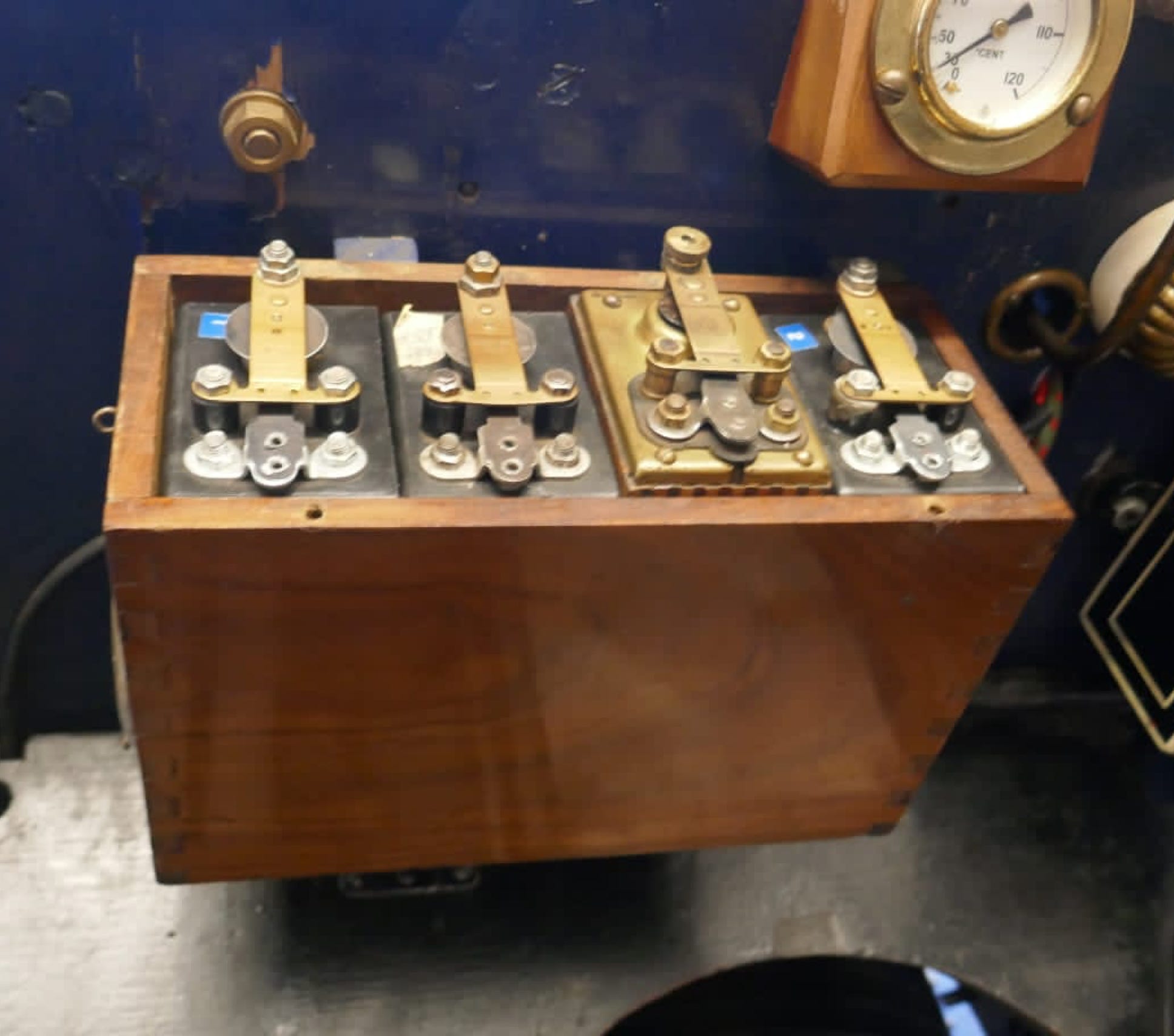
Illustration of the Panhard’s wiring
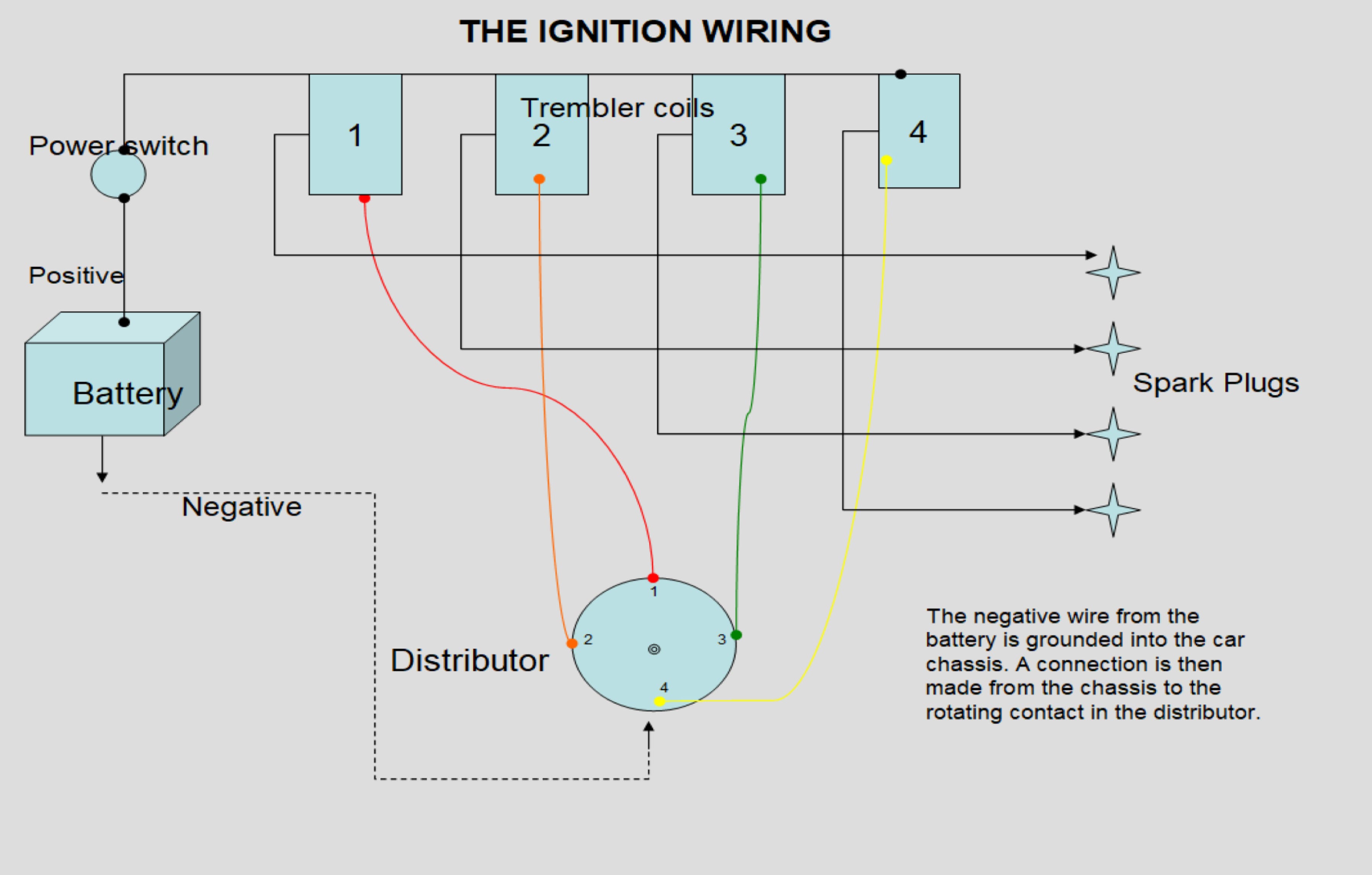
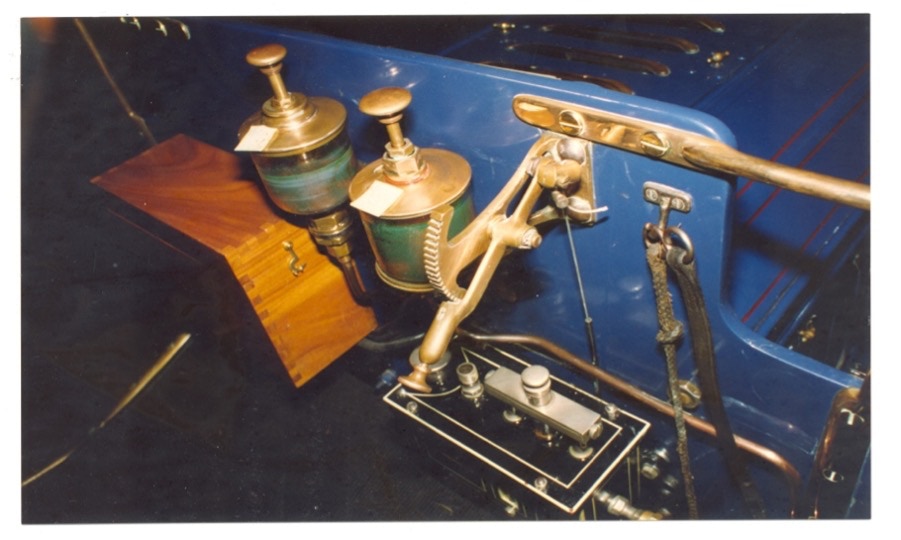
Retard lever
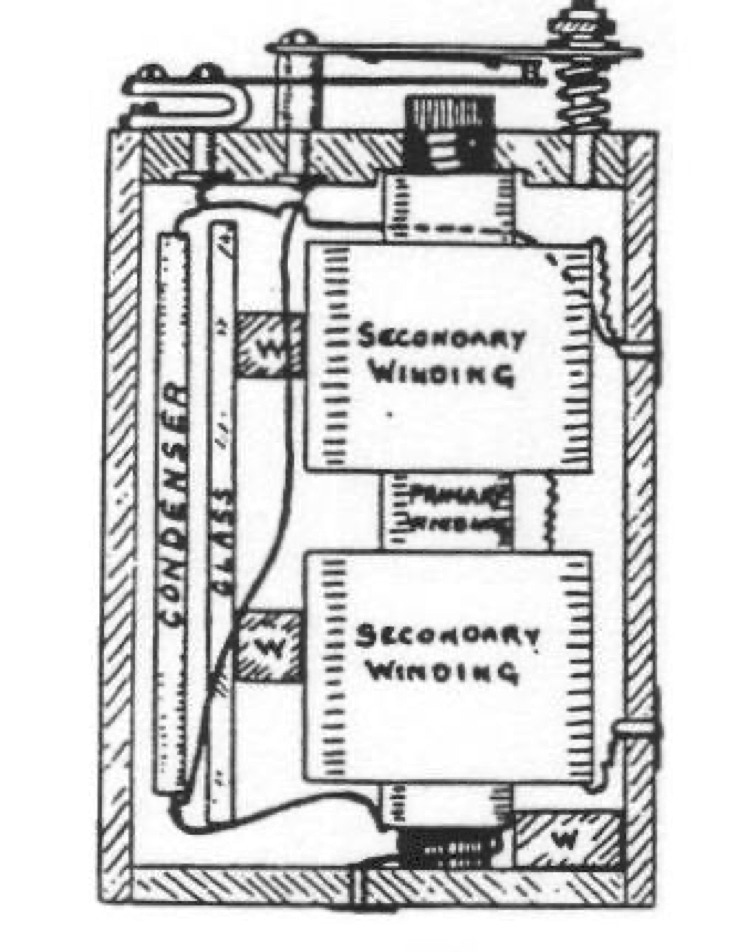
The Panhard’s four tremblers
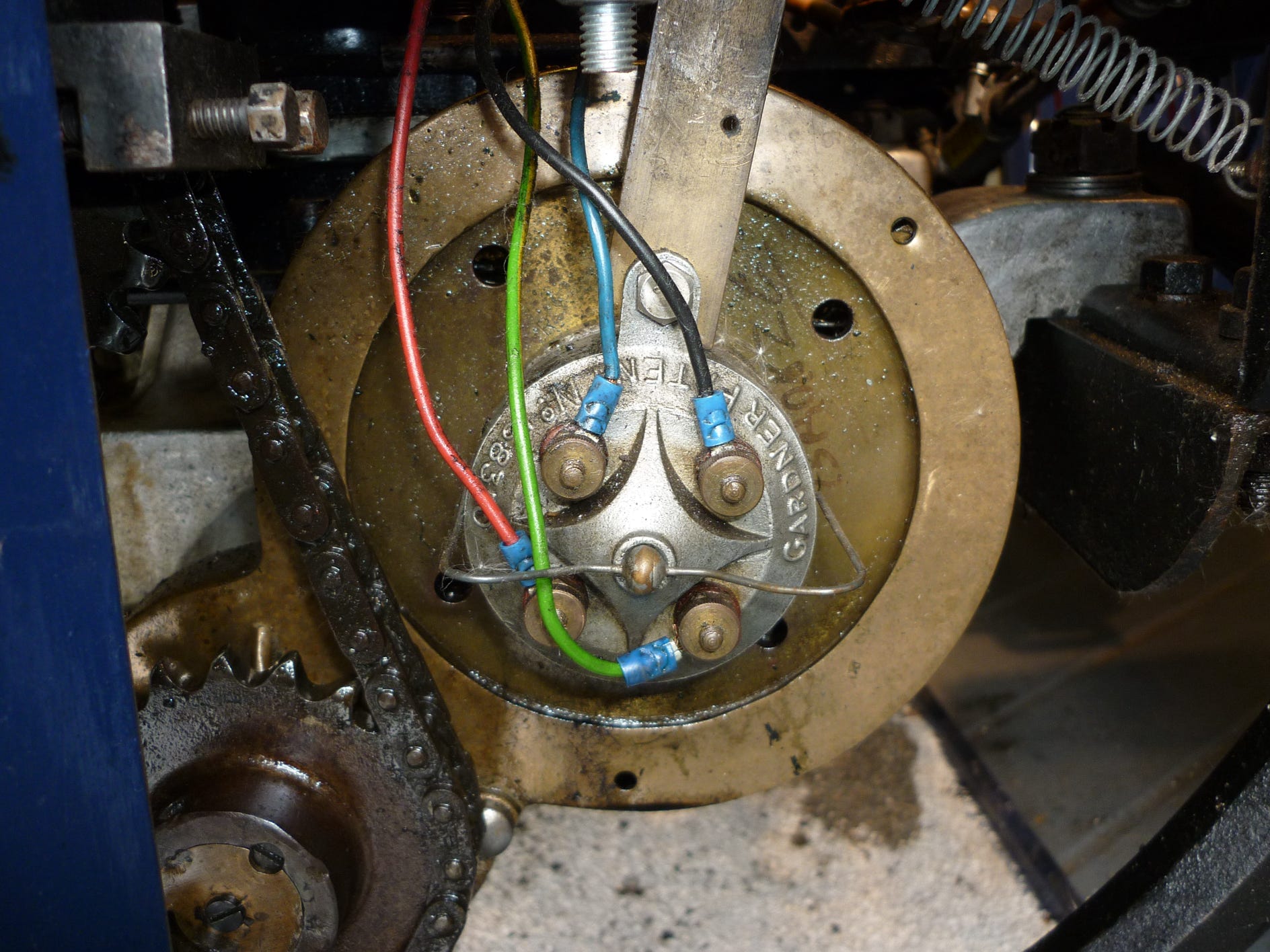
The distributor
Page updated
Copyright Team Panhard
2024